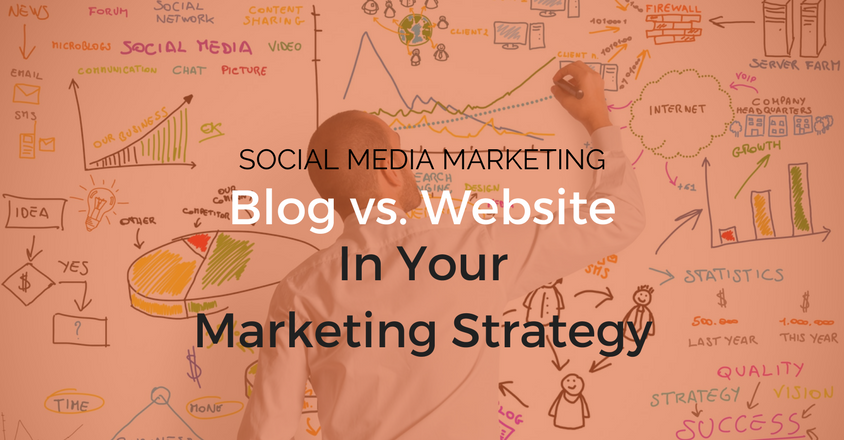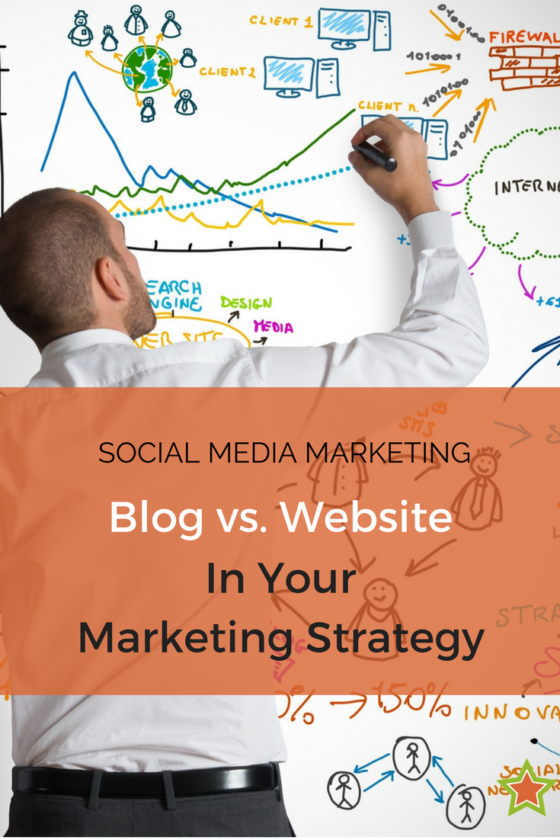The Difference Between a Blog and a Website in Your Marketing Strategy
A business with no blog or website is left open to the possibility of false representation. Of course, current or prospective clients can Google you, and chances are they will find something about you online. This information could include anything from a Yelp review of your business, your personal Facebook page, or maybe even a comment you left on a forum years ago. Though none of this may hurt your business, it may not be the impression you’d like to project.
Give your audience a designated place to visit where they can find more information about you. A blog or website will be the reflection of your business that you choose to put on display. It will provide information and answer clients questions, but that’s only scratching the surface. Let’s dive a little deeper.
Blog vs. Website – What’s the difference?
Creating a blog for your business can be a great alternative or addition to having a website. It’s simple, inexpensive, and a great place to start. Though having both is beneficial, here’s a breakdown of the main attributes that set them apart from one another.
Cost
If you’re hesitant about the cost and complication of a website, a blog is a great route to take. It is easy to set up, and typically free or extremely inexpensive. A website can become pricey, depending on needs, customization, and added-on features.
Content
Blog content is organized by date, with the most recent content appearing first. With a blog, new posts are added consistently and updated; this keeps reading material fresh and exciting for the audience. A website is typically more static, which means the content doesn’t change very often outside of adding new products or updating information.
Ranking
Google and other search engines give higher rankings to recent, relevant content that is regularly updated (blogs, for example). By contrast, search engines do not give the same weight to regular brochure-style or e-commerce sites because their content is primarily fixed and promotional. Content that is kept fresh, updated regularly, and provides a helpful source of information will rank higher by default. This means more opportunity for people to discover your blog, which helps build relationships and create new leads.
Interaction
A blog is essentially a form of social media. People can respond to the content you write by commenting directly on each post, and you can reply in the same fashion. Most blog designs include sharing buttons so that your readers can easily share your posts and information on Facebook, Twitter, and other various platforms. This could be your introduction and exposure to a new audience.
A website is less interactive since, in most cases, it serves solely as informative promotion; it gives the audience details about the business and services offered, but no place to interact. Therefore, a blog is very beneficial since you can let people get to know you on a more personal level. This platform gives your company a voice while encouraging conversation and feedback.
What should your new blog include?
- The name of your business
- A page describing your business that differentiates it from others similar to yours
- Information about yourself and other key people who may work for you
- Several ways to reach you
How to get started:
The major blogging platforms, such as WordPress and Blogger, are free to use. It’s recommended to set up your blog at your own domain (URL) or on your website (atblog.yourwebsite.com or yourwebsite.com/blog) so that the traffic your blog generates will come to your website and not to wordpress.com or blogger.com. If you need a new domain to host your blog, there’s a small cost to buy the domain and host it with a provider like GoDaddy or 1and1.com.
If you want to take your blog a step or two further, you can also hire a professional. They will be able to tend to any technical matters or help you customize and visually brand your blog. Of course, these additional services will add to your overall cost, depending on your needs and choice of vendors.
Altogether, it can cost you anywhere from $100 to $5,000 to set up a blog, depending on the level of design and complexity you require. There are countless free blogging tools available to get you started. If you’re willing to learn some of the ins and outs on your own, you can easily make the most out of a small budget.
The time and effort it takes to maintain a blog may be significant, but the benefits can be tremendous. Consumers have come to expect more than just promotion from the companies they choose to do business with. You have to give them a reason to come back, and providing them with useful content on a regular basis is an excellent way to do that. Each post you publish will be an everlasting asset towards establishing authority, building your brand, and promoting your business.
Crackerjack Marketing
Latest posts by Crackerjack Marketing (see all)
- Championing Representation and Equality: Why Diverse Buyer Personas Are Important - February 24, 2023
- Why Social Search Matters - December 13, 2022
- Social Media Mistakes - October 27, 2022
- Social Media Marketing and Management for Brands During the COVID-19 Pandemic - March 18, 2020
- Negative Comments About Your Brand? Make Them Work for You - July 23, 2019



